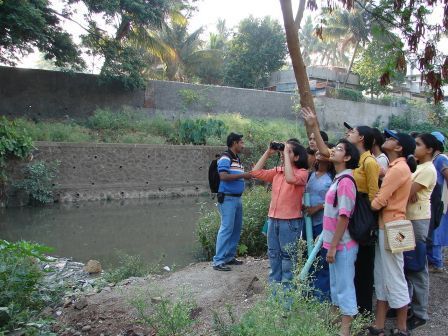
Manipal University has a well-thought out, multi-pronged approach towards reducing its environmental footprint. This includes a comprehensive waste management policy and a programme to reduce energy consumption. It has rainwater harvesting systems equipped with the very latest in filters, three sewage treatment plants and it also uses its rainwater runoff. In addition to ISO-14001:2004 certification, the campus has received several awards for environment management.
All very admirable but not nearly enough. Here's why.
Everything that the University does to recharge and reuse water accounts for a mere 10% of its total consumption. The campus harvested a little over 24 thousand cubic metres of rainwater in 2012 but its students alone consumed an estimated 14.5 lakh cubic metres or sixty times what was conserved!
Water consumption in the hostels alone is 200 litres per person per day. This is exclusive of laundry, air conditioning, and cooking. For comparison, the Bureau of Indian Standards considers 135 lpcd perfectly adequate for an individual's entire daily needs. Clearly, there is a disconnect between the students' water usage and the University's stated goals for reducing this usage.
Manipal University hosts about 20,000 of the country's bright young minds. Students, with their intelligence, ambition, and perseverance, have extraordinary potential to effect positive change. It is very likely that the young people from this campus will go on to occupy influential positions in careers of their choice. Hospitals, factories and construction sites are large consumers of water. If the next generation of corporate leaders are water-aware and environmentally committed, it could well change the face of these industries. That is a large premise, however. The students first have to learn lessons in conservation if they are to make a change.
 Is that a university's job, though? Does its responsibility stop at teaching its students the core subjects they signed up to study or should it take students' education a step further and build their characters and sensitivities? That's a difficult question to answer but here are some suggestions on how to involve students and expose them to more than they signed up for.
Is that a university's job, though? Does its responsibility stop at teaching its students the core subjects they signed up to study or should it take students' education a step further and build their characters and sensitivities? That's a difficult question to answer but here are some suggestions on how to involve students and expose them to more than they signed up for.
- Teach: The environment education class at the University is currently only for first-year engineering students. Include the future doctors too! Two hours a week to learn how to survive in a changing world is not much to ask even of busy medical students.
- Talk: The University boasts of both enthusiastic teachers and students. Get them together informally. Make it fun. Debate, brainstorm, chat.
- Wander: Manipal is plumb in the middle of an area that is home to unique methods of water conversation. Explore these! Instead of yet another factory for a class tour, visit a suranga.
- Listen: While on those class tours, talk with some farmers. They will tell epic stories of passion, tragedy and triumph-all centred around water.
- Do: Make water metering the responsibility of the student body. Set up a weather monitoring station and hand it over to the students. Let volunteering at 'madaga' restoration projects become an acceptable internship.
- Play: We at India Water Portal have a lot of fun working on development issues. Join the party. Volunteer with us or with similar organisations. Set up competitions between classes and hostels. The winner gets a garden planted with campus-generated compost.
These efforts aren't easy. Students can be blasé, focused on their books, and can possess more inertia than Newton would believe possible! But us 'grown-ups' are not too different. So the last point on my list is:
- Learn: This is a whole new world for all of us, irrespective of age. Both climate change and increasing population stress have taken out the old rules we knew so well. Let's learn together-teachers and students alike.